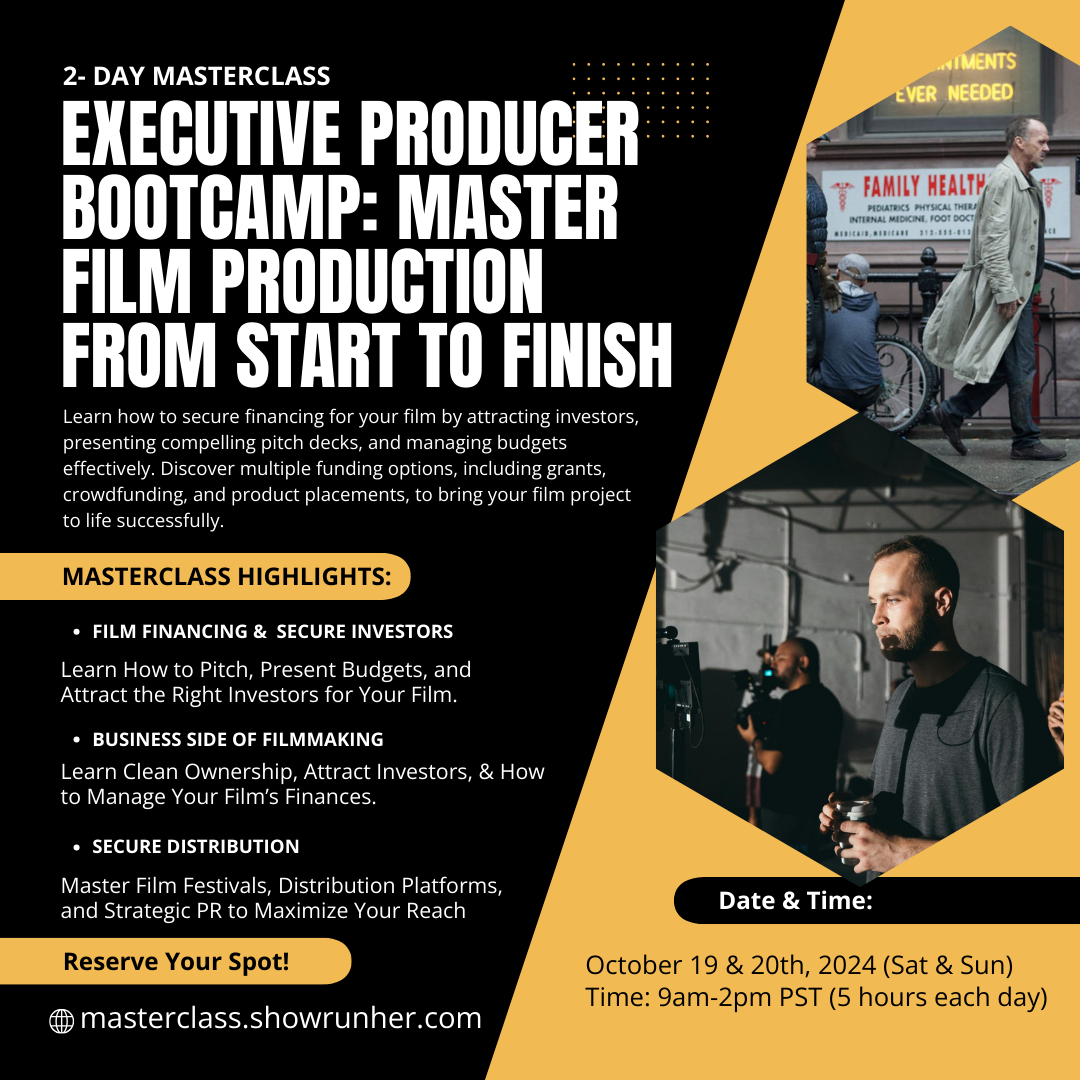Act 2 is often referred to as the “meat” of your screenplay. It’s the longest section, where most of the action and character development takes place. However, it’s also where many scripts lose momentum if not handled properly. Pacing Act 2 effectively is key to keeping your audience engaged and invested in your story. In this blog, we’ll explore practical strategies to keep Act 2 exciting and compelling.
1. Break Act 2 into Two Halves (Act 2A and Act 2B)
One of the most useful techniques for pacing Act 2 is to divide it into two parts: Act 2A and Act 2B. Doing this helps you manage the flow and ensures that each half has its own distinct momentum.
- Act 2A: This is where the protagonist starts encountering obstacles and challenges related to the main conflict. Here, they might feel like they’re making progress or learning about the world and the antagonist.
- Midpoint: At the center of Act 2 is the Midpoint, a crucial turning point that raises the stakes and shifts the story in a new direction.
- Act 2B: After the Midpoint, things often get darker and more complicated for the protagonist. This is where they encounter their biggest challenges, leading up to the lowest point before the final act.
Example: In Jurassic Park, Act 2A is all about the wonder of the dinosaurs and early technical challenges. The Midpoint occurs when the power goes out and the dinosaurs escape, leading to the tension-filled Act 2B, where the characters fight for survival.
Pro Tip: Plan Act 2A to build tension and intrigue, and let the Midpoint shake things up. Act 2B should then escalate the conflict and push your protagonist to their limits.
2. Build Up to a Powerful Midpoint
The Midpoint is critical because it changes the direction of the story. Think of it as a mini-climax that should leave both your protagonist and audience feeling like the stakes have dramatically increased. A strong Midpoint creates a sense of momentum that propels the second half of Act 2 forward.
Some Midpoint strategies:
- Big Revelation: The protagonist learns something new that changes their understanding of the conflict.
- Reversal of Fortune: The protagonist’s situation either improves or deteriorates dramatically.
- Escalation: Introduce a new twist or obstacle that makes the goal much harder to reach.
Example: In The Dark Knight, the Midpoint occurs when the Joker forces Batman to choose between saving Rachel or Harvey. This pivotal moment forces Batman into a moral and emotional crisis, raising the stakes significantly for the rest of the film.
Pro Tip: Your Midpoint should be a significant event that shifts the trajectory of the story. Make it impactful, whether through a plot twist, a major decision, or a surprising revelation.
3. Escalate Conflict and Raise the Stakes
In Act 2, your protagonist should constantly be facing new challenges that test their resolve. If the conflict stays static, your audience will lose interest. Keep things moving by escalating the stakes with each scene.
Ways to escalate conflict:
- Introduce New Obstacles: As the protagonist gets closer to their goal, make things more difficult. Whether it’s internal doubts, external threats, or emotional stakes, ensure that the protagonist is tested at every turn.
- Add Complexity: Introduce subplots, secondary antagonists, or emotional conflicts that deepen the protagonist’s journey. This adds layers to the story and keeps it engaging.
- Heighten Consequences: Show that the risks are getting higher as the story progresses. The protagonists should feel like they have more to lose the deeper they go into Act 2.
Example: In Inception, the further Dom Cobb and his team dive into the dream levels, the more intense and dangerous the challenges become. Each layer adds complexity and raises the stakes, leading up to the climactic third act.
Pro Tip: Don’t be afraid to make things difficult for your protagonist. The more obstacles they face, the more satisfying their ultimate triumph (or failure) will be.
4. Vary the Pacing with Peaks and Valleys
Not every scene in Act 2 has to be high-energy or full of action. To keep the pacing dynamic, vary the tension levels. You need a balance of “peaks” (high-intensity moments) and “valleys” (lower-intensity, character-driven scenes) to give the audience breathing room and time to process key developments.
- Peaks: These are the action-packed, dramatic, or highly emotional moments where the tension is at its highest. Examples include fights, arguments, or major plot twists.
- Valleys: These scenes slow things down and give the audience a break. They might focus on character development, emotional reflection, or quieter moments that deepen relationships.
Example: In The Hunger Games, the action-packed fight scenes in the arena are balanced by quieter moments where Katniss reflects on her situation or builds alliances with other tributes.
Pro Tip: Too many peaks in a row can exhaust the audience, while too many valleys will make them lose interest. Aim for a mix that creates rhythm and variation in your screenplay.
5. Foreshadow the Climax
As you near the end of Act 2, you should start laying the groundwork for the final showdown in Act 3. This doesn’t mean giving away the climax, but you can drop hints or foreshadowing that builds anticipation.
Ways to foreshadow the climax:
- Plant Key Information: Introduce elements that will be important in Act 3, whether it’s a piece of advice, a weapon, or an ally that will come in handy later.
- Tease the Final Conflict: If your protagonist is gearing up to face the antagonist, give the audience a preview of what’s coming, whether through a confrontation, a threat, or a visual clue.
- Set Emotional Stakes: Make sure the emotional tension is building towards something significant. The audience should be rooting for your protagonist to succeed (or fail) when the final battle comes.
Example: In Harry Potter and the Sorcerer’s Stone, as Harry gets closer to the final confrontation with Voldemort, we see a foreshadowing of his ability to speak Parseltongue and the importance of the mirror, which both play key roles in the climax.
Pro Tip: Keep your audience guessing, but drop enough hints to build suspense and anticipation for Act 3’s big showdown.
Conclusion
Pacing Act 2 is about maintaining momentum, escalating conflict, and keeping the story fresh with new twists and challenges. By breaking Act 2 into two halves, building towards a powerful Midpoint, escalating the stakes, and varying the pacing with peaks and valleys, you’ll ensure that your screenplay keeps the audience hooked all the way to the final act.
Master these techniques, and Act 2 will become the driving force that makes your screenplay impossible to put down.













[…] for Screenwriters: Keep the momentum going in Act 2. It’s easy for this section to feel long and slow, so make sure each scene moves the plot forward […]